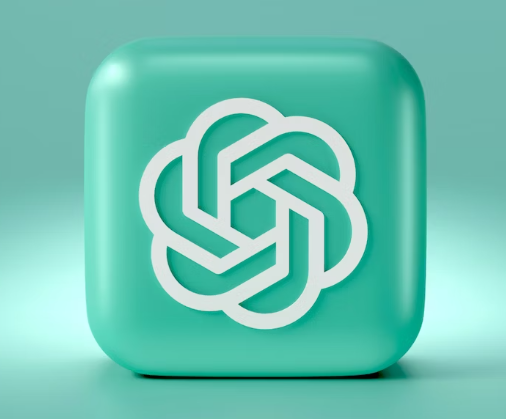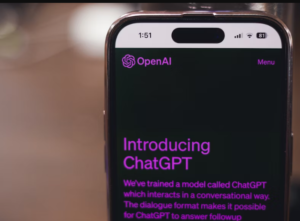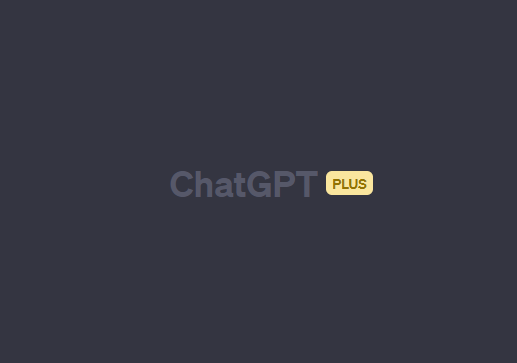Are you searching for the most recent information on the ChatGPT AI chatbot? You are in the tight place!
As ChatGPT evolved from a new chatbot into a piece of technology guiding the next phase of innovation, it has continued to amaze the internet with AI-generated content. In recent years, no electronic product has sparked as much interest, apprehension, fascination, and discussion.
If you are only now becoming aware, it would be reasonable to be intrigued about the fuss. This is the comprehensive tutorial you’ve been seeking, whether you’re concerned about an AI apocalypse or want to learn more about the app. You can try it out for free (or use the official free iOS app), but you can also use it to try it out for yourself.
What is ChatGPT?

The AI chatbot ChatGPT uses natural language. At the most fundamental level, you can ask it any question and get a response.
ChatGPT, however, is based on what is known as an LLM, unlike a plain voice assistance like Siri or Google Assistant (Large Language Model). These neural networks are trained for deep learning using enormous amounts of data from the internet; as a result, they create whole new responses rather than just repeating previously programmed ones. They’re much more intelligent than older chatbots because they weren’t created with a specific goal.
This is implied by the abbreviation ChatGPT, which stands for Chat Generative Pre-trained Transformer. The current iteration of ChatGPT is built on the GPT-3.5 LLM. The language model for ChatGPT was refined using supervised learning and RLHF on various web content, including websites, novels, social media, news stories, and more (Reinforcement Learning From Human Feedback). According to OpenAI, ChatGPT’s utilization of human AI trainers makes it unique.
ChatGPT was originally made available to the public in November 2022 as a prototype. It had over 100 million users by January 2023, making it the program that was adopted the fastest ever.
How to Use ChatGPT
Visit chat.openai.com first. To get started, you must register for a free OpenAI account. You can choose between using your email address or a simple Google or Microsoft account login. Next, you’ll be prompted to input your phone number; remember that you cannot register for OpenAI using a virtual phone number (VoIP). Once you enter the confirmation number you will be given on the registration page, the setup will be complete.
Steps to Use ChatGPT
First, go to chat.openai.com. You must first register for a free OpenAI account if this is your first visit. You can log in quickly with a Google or Microsoft account or by entering your email address. Your phone number will need to be joined; however, remember that a virtual phone number cannot be used to register for OpenAI (VoIP). Once you enter the confirmation number, you will be given the registration page, and the setup will be complete.
It’s pretty easy to use the ChatGPT chatbot; you only have to enter your text to get information. The trick is using your imagination to see how your ChatGPT responds to various instructions.
The generator will execute the commands with precise information if there is sufficient data. If not, ChatGPT can start to spread erroneous information to fill in the gaps. Although they are rare, OpenAI cautions that occasionally AI “hallucinations” do happen.
However, according to the business, ChatGPT, which employs the GPT-3.5 LLM (extended language model), currently has “little understanding of global events after 2021.” Choose a different tool, such as Bing Speak to get more details about the more recent world.
You can still ask queries up until the point at which you either quit your browser or reset the thread to clear out any previous ones. The dialogues in the sidebar are then automatically given names and saved. Also, you have the option of using ChatGPT in light or dark mode.
ChatGPT only supports text in both directions, unlike Bing Chat, which can now produce images using the Bing Image Maker and receive images as question prompts. Google Bard recently received this feature as well.
How To Operate the ChatGPT iPhone App
 You can now download the official OpenAI iOS app released after many months of waiting. The software has been downloaded more than half a million times in less than a week and is now available in an expanding number of countries.
You can now download the official OpenAI iOS app released after many months of waiting. The software has been downloaded more than half a million times in less than a week and is now available in an expanding number of countries.
The usage rules are comparable to those for the ChatGPT web application. Except from that, it functions almost exactly like the web app—type in your query to start a discussion. You do have a different way to log in than using your Apple ID account.
The uncluttered UI displays your communication with Users while concealing the chat history and settings in the upper right menu. Users who buy ChatGPT Plus can use the software to switch between GPT-3.5 and GPT-4. Even better, you can use the microphone to speak while utilizing ChatGPT.
Our mobile editor used the app and noticed that it still does not provide an internet connection like chatbots like Bing Chat and Perplexity. However, remember that there isn’t currently an official Windows, Mac, or Android app. We advise staying with the web app if you’re using one of those platforms to avoid any potential fraud or scams.
Is it free to use ChatGPT?
Yes, you can use the free basic version of ChatGPT. There is no daily usage limits for ChatGPT, although responses do have a word and character limit.
Of course, in order to keep utilizing it, OpenAI must pay. According to preliminary estimates, OpenAI presently spends about $3 million monthly—or about $100,000 per day—to maintain ChatGPT. A research from April estimates that the daily operational costs are more like $700,000.
There have recently been some shocking revelations regarding what else has been done to train the language model to avoid creating inappropriate text, in addition to the cost of the servers.
Moreover, OpenAI provides ChatGPT Plus, a more expensive version of its chatbot. Faster replies and early access to breakthrough technologies like GPT-4 are all included for $20 each month, even during peak hours.
Who was the author of ChatGPT?
ChatGPT was created by OpenAI, a San Francisco-based AI research center. The company was founded as a non-profit funded by well-known individuals like Peter Thiel and Elon Musk to collaborate with other organizations and scholars.
In 2019, OpenAI became a for-profit business, and Sam Altman is now the CEO. It is powered by Nvidia’s GPUs, including the new supercomputers announced this year, and operates on Microsoft’s Azure system architecture. Beginning in 2019, Microsoft also made major investments in OpenAI.
Recent ChatGPT Disputes
While being a beneficial tool, ChatGPT has specific issues. It has a reputation for making errors or having “hallucinations,” where it invents a response to a question it is unsure of. The straightforward illustration of misidentifying the Japanese prime minister served to highlight its sporadic accuracy.
Because of the widespread concern about what this human-like generative AI will mean for the future of the internet, thousands of IT professionals and well-known public personalities signed a petition asking for the research to be slowed down. Due to objections from the FTC and privacy concerns, it was outlawed in Italy; however, that decision has since been reversed.
Regarding prohibitions, notable organizations like Samsung, Amazon, Verizon, and even the US Congress have prohibited the internal use of ChatGPT. Even though Tim Cook admitted to using it just weeks after it was forbidden, Apple is now on the list.
According to Goldman Sachs, another issue is the potential loss of employment, up to 300 million globally, due to generative AI like ChatGPT. Beyond that, several issues have also arisen regarding individuals using ChatGPT to conduct duties that are perhaps best handled by a live person.
For instance, Vanderbilt University’s Peabody School has recently come under fire for sending out an email that discussed a mass massacre and the importance of community. JPMorgan Bank also limits employees’ use of the AI chatbot, particularly when creating emails, something other businesses like Apple have also done internally.
After the release, ChatGPT passing the Wharton MBA exam generated the most considerable controversy. According to the school, ChatGPT answered all questions “excellently” and received a B- or above on the MBA exam.
Is ChatGPT detectable?
Teachers, administrators, and developers who have prohibited the use of ChatGPT in classrooms are already getting around this. While some people are more hopeful about the potential of ChatGPT as a teaching tool, plagiarism will undoubtedly remain a problem in the field of education in the future. There are many ideas for how ChatGPT may “watermark” its text to prevent plagiarism, however it is still very difficult to recognize ChatGPT.
ChatGPT recently unveiled a new version of their plagiarism detection tool to allay some of the worries about how people are abusing text production. It makes use of a novel feature called “AI text classifier,” which works similarly to earlier plagiarism detection programs. But, according to OpenAI, the system is still in development and “imperfect.”
Other methods, including GPTZero, are purportedly also capable of detecting plagiarism in ChatGPT. Even when they work, these technologies can still be defeated by additional AI response manipulation.
Usage examples for ChatGPT
That’s the enjoyable part, then. Since the chatbot’s release, users have been experimenting to learn what it can and cannot accomplish. The results have been amazing in several cases.
Yet finding the precise prompts and follow-up cues that ChatGPT responds to properly requires some trial and error. Similar to what we’ve come to expect from conventional search engines, it can take some time to get the best results from ChatGPT. If you want to get started, we provide a list of the best ChatGPT tips.
What you intend to gain from it will determine everything. If you’re a programmer and a newbie, consider utilizing it to create code snippets or a sample blog post.
But actually doing it is what makes it fun. Whether you believe ChatGPT is a fantastic piece of technology or that it will bring about the end of the internet as we know it, it is worth testing out to see what it is capable of.
Yet nothing is open to question. OpenAI has implemented safeguards in order to “build a safe and beneficial artificial general intelligence.” Thus, it is generally prohibited to pose any queries that are antagonistic, aggressive, sexist, racist, or otherwise offensive.
What Are The Prospects for GPT-5 and ChatGPT?

There is no disputing that ChatGPT is currently sweeping the tech sector, and this trend doesn’t seem to be slowing down. The brand-new ChatGPT-4 model, which is currently only usable with ChatGPT Plus, has been formally launched. Although some components, like visual input, aren’t present, we know that Bing Chat is at least partially based on the GPT-4 language model.
A more significant advancement will be made in ChatGPT’s continued integration with other programs. According to reports, Microsoft invested several billion dollars in ChatGPT, which is already beginning to pay off.
When Teams Premium, an integration of OpenAI’s services, first debuted, it offered transcripts and automated tasks. The most noticeable addition was Microsoft’s 365 Copilot, which integrates ChatGPT’s natural language prompts into Office applications including Word, PowerPoint, Outlook, and more.
Initial reports indicated that GPT-5 was on its way and might complete training towards the end of the year, with some people asserting that it would acquire AGI (artificial general intelligence). That’s a significant and contentious claim, but it’s evident that things are moving forward quickly.
GPT-5 has not been scheduled or included in the timeline since that time, according to OpenAI. The forthcoming GPT-4.5, however, is currently being prepared and may be made available by the end of the year. Planning might be completed as early as September or October, according to OpenAI.
All of this argues that if you think AI is significant now, wait until it is included in the most famous work and educational applications.
Is It Worth Attempting Substitutes for ChatGPT
Although ChatGPT remains the most well-liked AI chatbot, it faces some competition. The leading competitor, Bing Talk from Microsoft, bases its responses on OpenAI’s GPT-4 model.
Although Bing Chat requires downloading the Edge browser, it is cost-free and has extra features, including several writing modes, image creation, and search links. It recently received a significant update that added functions like export, third-party plugins, and multimodal support.
Moreover, YouChat uses an earlier model, the GPT-3 model from OpenAI, whereas Forefront AI gives you access to GPT-4 and later models.
The major GPS-free competition to ChatGPT is Google Bard. Because Google Bard is based on the company’s internal LaMDA language model, it is intended to directly compete with OpenAI. The most recent improvements make it a far more alluring alternative for ChatGPT, even though it isn’t quite there yet.
There are many more online chatbots, some of which, like Vicuna and HuggingChat, were created using Meta’s open-source LLaMA language paradigm.
Frequently Asked Questions
1) When was ChatGPT made available?
In November 2022, OpenAI first made ChatGPT accessible to the general public. The chatbot is built on the GPT-3.5 LLM, a modified version of the GPT-3 model that was first released on March 15, 2022. GPT-3, however, has been present for a while. It was first made available in June 2020, but only as an autoregressive language model.
The GPT-3’s predecessors were never exposed to the general public. The first GPT research paper was released on the OpenAI website in 2018, and GPT-2 was unveiled in February 2019.
2) Will ChatGPT replace Google Search?
Instead of replacing search, chatbots are more likely to be integrated into it. This is already available from Microsoft with Bing Chat and Bing, which adds a “conversation” tab directly to the Bing search menu.
Through its Search Generative Experience, Google has also started experimenting with incorporating Google Bard’s intelligence into search. We’re in the early stages when each has its goods, but it’s not difficult to picture a time when they all work together to provide a seamless experience.
3) Is ChatGPT the same as Bing Chat?
With Bing Talk, Microsoft has formally included ChatGPT in Bing. After a protracted beta period, it was finally made available for testing by the general public. Unlike to ChatGPT, Bing Chat requires the most recent version of Edge to be downloaded. Thus, Chrome and Safari users are out of luck.
Bing Chat had a reputation for having crazy responses at first, but Microsoft has moved rapidly to cool things down. Bing Chat is more efficient and accurate than ChatGPT since it uses the most recent GPT-4 language model, which was recently made public.
Also, the new Edge Copilot mode presents suggested prompts, connections to extra information, and possibilities to tailor the type of responses it provides, providing a more user-friendly way to get started. Moreover, Bing Talk is now available directly on your desktop, thanks to Windows Copilot.
4) Is ChatGPT the same as Google Bard?
A separate Algorithm from Bing Chat powers Google Bard’s natural language capabilities. From its debut, LaMDA—which stands for Linguistic Model for Dialogue Applications—has been used by Bard. The lack of accuracy in Bard’s comments has been apparent from the start.
Yet, rumors suggest that Bard will soon receive a substantial update, going from having been trained on 30 billion parameters to 600 billion. It might bring it closer to what GPT -4 is capable of.
Conclusion
The advancements and updates in the ChatGPT AI chatbot have undoubtedly propelled it to new heights in the realm of natural language processing and conversational AI. With each iteration and refinement, ChatGPT has continued to astound users with its ability to understand and generate human-like text, providing insightful and contextually relevant responses.
The continued efforts and dedication of the developers have resulted in a chatbot that can engage in diverse conversations, assist users in various domains, and adapt to new information and situations.
However, it is important to acknowledge that as powerful as ChatGPT may be, it still has limitations and challenges to overcome.
See Also